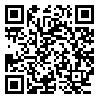Volume 15, Issue 13 (9-2017)
RSMT 2017, 15(13): 17-24 |
Back to browse issues page
Download citation:
BibTeX | RIS | EndNote | Medlars | ProCite | Reference Manager | RefWorks
Send citation to:



BibTeX | RIS | EndNote | Medlars | ProCite | Reference Manager | RefWorks
Send citation to:
Entezari S, Memar R, Kakavand M. Effect of taekwondo on plantar pressure distribution symmetry in dominant and none-dominant limb. RSMT 2017; 15 (13) :17-24
URL: http://jsmt.khu.ac.ir/article-1-210-en.html
URL: http://jsmt.khu.ac.ir/article-1-210-en.html
, s.entezari92@gmail.com
Abstract: (8047 Views)
The aim of this study was the comparison of plantar pressure distribution, vertical ground reaction force and contact area between dominant and none-dominant limb in top-flight females taekwondo.10 healthy young top-flight females taekwondo were selected. plantar pressure ,vertical ground reaction force and contact area were evaluated by emed system .The obtained data were analyzed by paired -t test and Symmetry index significance difference in toes 3-5 contact area between dominant and none dominant limb In addition Symmetry index for each parameter indicate asymmetry between limbs. The most ground reaction force and plantar pressure applied on heel region and metatarsal 3-5 and the least ground reaction force and plantar pressure applied on toe 2and toes3-5 in both limb.
Type of Study: Research |
Received: 2015/05/31 | Accepted: 2016/04/24 | Published: 2017/08/23
Received: 2015/05/31 | Accepted: 2016/04/24 | Published: 2017/08/23
References
1. Ledoux, W., Hillstrom, H. (2002). The distributed plantar vertical force of neutrally aligned and pes planeus feet. Gait and Posture. 15:1-9.
2. Firth, J., Turner, D., Smith, W., Woodburn, J., Helliwel, P. (2007). The validity and reliability of pressure stat for measuring plantar foot pressures in patient rheumatoid arthritis. Clinical Biomechanic. 22:602-6.
3. Chen, M., Huang, B., Xu, Y. (ICRA 2008). “Intelligent shoes for abnormal gait detection,” in Proc. IEEE Int. Conf. Robot. Autom. 2019-24.
4. Mueller, M. (1999). Application of Plantar pressure assessment in footwear and insert design. Journal of Orthopaedic & Sports Physical Therapy. 29(12): 747-55.
5. Gioftsidou, A., Malliou, P., Pafis, G., Beneka, A., Godolias, G., Maganaris, C. (2006). The effect of soccer training and timing of balance training on balance ability. European Journal of Applied Physiology. 96:659-64.
6. Burnfield, J. (2004). The influence of walking speed and footwear on plantar pressure in older adults. Clinical Biomechanics.19:78-84.
7. Queen, R., Haynes, B., Hardaker, W., Carrett, W. (2007). Forefoot loading during 3 athletic tasks. The American Journal of Sports Medicine. 35:630-36.
8. Herzog, W. (1989). Asymmetries in ground reaction forces patterns in normal human gait. Medicine Scince Sport Exercise. 21:101-14.
9. Hamill, J., Bates, B.T., Knutzen, K.M. (1984). Ground Reaction Force Symmetry During Walking and Running. Research Quaterly For Exercise and Sport. 55:289-93.
10. Rosenrote, P. (1980). Asymmetry of gait and the relationship to lower limb dominance. Human Locomotion.1:26-7.
11. Maupas, E., Paysant, J., Martinet, N., André, J. (1999). Asymmetric leg activity in healthy subjects during walking, detected by electrogoniometry.Clinical Biomechanic. 14(6):403-11.
12. Leroy, D. (2000). Spatial and temporal gait variable differences between basketball, swimming and soccer players. Sports Medicine. 21:158-62.
13. Wong, P., Chamari, K., Chaouachi, A., Wisloff, U., Hong, Y. (2007). Difference in plantar pressure between the preferred and non-preferred feet in four soccer-related movement. British Sport Medicine .41(2):84-92.
14. Lorin, J.E., Bryden, M., Bulman-Fleming, M. (1998). Footendness is a better predictor than is handedness of emotional lateralization. Neuropsychologia. 36(1):37-43.
15. Putti, A., Arnold, G., Conchrane, L., Abboud, R. (2008). Normal pressure values and repeatability of the of the Emed ST4 system. Gait and Posture. 27(3):501-5.
16. Boyd, L., Bontrager, E., Mulroy, S., Perry, j. (1997) The reliability and validity of the novel Pedar system of in-shoe pressure measurement during free ambulation. Gait and Posture. 5(2):165-.9.
17. Murphy, D., Beynnon, B., Michelson, J., Vacek, P. (2005). Efficacy of plantar loading parameters during gait in terms of reliability ,variability,effect of gender and relationship between contact area and plantar pressure. Foot and Ankle International. 26(2):171-9.
18. Ramanathan, A., Kiran, P., Arnold, G., Wang, W., Abboud R. (2010). Repeatability of the pedar -X in shoe pressure measuring system. Foot & Ankle and Surgery.16(2):70-3.
19. Robinson, R., Herzoge, W., Nigg, B. (1987). Use of force platform variables to quantify the effects of chiropractic manipulation on gait symmetry. Manipulative and Physiological Therapeutics.10:172-6.
20. Hennig, E., Rosenbaum, D. (1991). Pressure distribution patterns under the feet of children in comparision with adults. Foot and Ankle International.15:35-40.
21. Jarmo, P. ( 2002). Foot loading in normal and pathological walking: University of Jyvaskyla.
22. Levangie, P., Norkin, C. (2001). Joint structure and function. FA Davis company Philadelphia. 3:367-403.
Send email to the article author
| Rights and permissions | |
 |
This work is licensed under a Creative Commons Attribution-NonCommercial 4.0 International License. |






